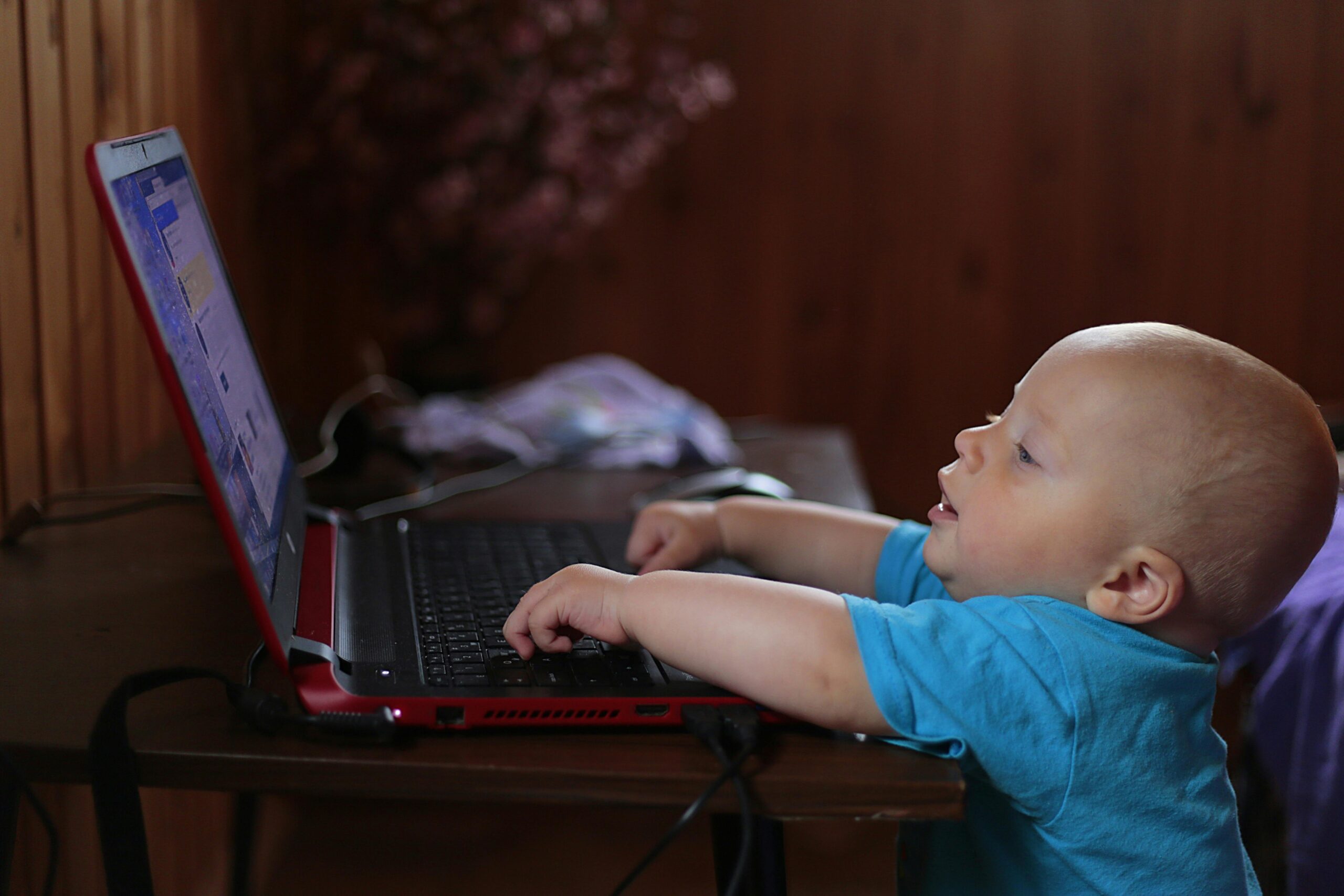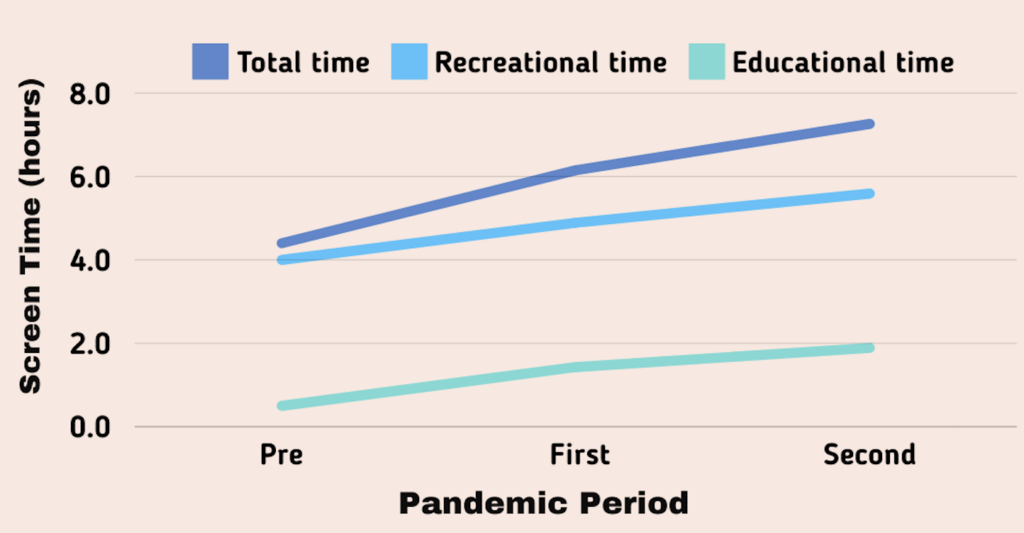
Children’s capacity for learning and development is shaped and molded by their early childhood experiences. Enriching activities like parent-child conversations and play can significantly enhance language acquisition, socioemotional skills, reasoning abilities, intelligence, and overall brain function.
Media devices and digital content have become a pervasive part of children’s early lives, with increased media usage. For example, in 2013, only 7% of children under the age of 8 had their own devices, but by 2017, this number had risen to over 42%. Over the past two decades, children’s total screen time exposure (encompassing both educational and recreational content) has steadily increased. For instance, screen time for children aged 0 to 2 years rose from 1.5 hours in 1997 to 3 hours in 2014. The COVID-19 pandemic further exacerbated this trend, with screen time nearly doubling between 2020 and 2022.

The American Academy of Pediatrics and the World Health Organization have issued screen time guidelines for children. Аccording to these regulations
- children up to 18 months should receive no screen time except for video chats with relatives
- children between 18 and 24 months should receive no more than 60 mins of high-quality educational content co-viewed with a parent
- children aged 2 to 5 years should receive up to 60 minutes of quality screen time
- children above 5 years should receive up to 60 mins of screen time and build media habits.
However, most children exceed these recommendations, and public skepticism remains about whether these guidelines are evidence-based. But what does developmental science say about screen time and its impact on cognitive and language development?
Cognitive development refers to the gradual formation and maturation of skills such as memory, problem-solving, mathematical reasoning, knowledge acquisition, and understanding of the world. Similarly, language development involves skills like word comprehension, communication, speech, vocabulary acquisition, reading, and writing.
Research indicates that media exposure can have both positive and negative effects on children’s development. On the positive side, it can provide educational opportunities, stimulate creativity, foster communication and socialization, entertain, and offer access to information. On the negative side, excessive screen time can lead to addiction, dependency, poor academic performance, social isolation, behavioral issues, developmental delays, and exposure to online risks. While time spent on educational apps is generally beneficial, it constitutes only a small fraction of total screen time.
Research is unequivocal in showing that excessive screen time has significant costs. For instance, increased screen exposure at 24 and 36 months of age is associated with developmental delays at 36 and 54 months. A longitudinal study of children from 12 to 36 months old found that for every additional minute of screen time, children heard 6.6 fewer adult words, made 4.9 fewer vocalizations, and engaged in 1.1 fewer conversational turns.
Given that the average screen time in this study was 172 minutes per day, children missed out on hearing approximately 1,139 adult words, making 843 vocalizations, and engaging in 194 conversational turns. Given the critical importance of parent-child interactions, each extra minute of screen time comes at a developmental cost.
Although the impact of excessive screen time in early childhood (ages 0 to 2 years) may appear relatively low, adhering to recommended screen time guidelines is essential, as media habits tend to solidify over time and grow in influence.

To mitigate the negative effects of screen time on children, parents can take a proactive approach. From a cognitive development perspective, encourage play, engage in stimulating games like puzzles, use real-world examples, provide opportunities for exploration and hands-on learning, and establish healthy routines. For language development, engage in reading aloud, foster conversations, play word games, sing songs, and practice writing. Whenever possible, opt for educational programming and co-view with children, as these activities appear to benefit their development.
While digital devices and media offer great opportunities, they should be used in moderation, with “old-school” practices still playing a vital role in a child’s growth.
.
.
Resources:
Brushe, M. E., Haag, D. G., Melhuish, E. C., Reilly, S., & Gregory, T. (2024). Screen Time and Parent-Child Talk When Children Are Aged 12 to 36 Months. JAMA pediatrics, 178(4), 369-375.
Madigan, S., McArthur, B. A., Anhorn, C., Eirich, R., & Christakis, D. A. (2020). Associations between screen use and child language skills: a systematic review and meta-analysis. JAMA pediatrics, 174(7), 665-675.
McArthur, B. A., Tough, S., & Madigan, S. (2022). Screen time and developmental and behavioral outcomes for preschool children. Pediatric research, 91(6), 1616-1621.
Panjeti-Madan, V. N., & Ranganathan, P. (2023). Impact of screen time on children’s development: cognitive, language, physical, and social and emotional domains. Multimodal Technologies and Interaction, 7(5), 52.
Hedderson, M.M.; Bekelman, T.A.; Li, M.; Knapp, E.A.; Palmore, M.; Dong, Y.; Elliott, A.J.; Friedman, C.; Galarce, M.; GilbertDiamond, D.; et al. Trends in Screen Time Use among Children during the COVID-19 Pandemic, July 2019 through August 2021. JAMA Netw. Open 2023, 6, e2256157.
.
.
